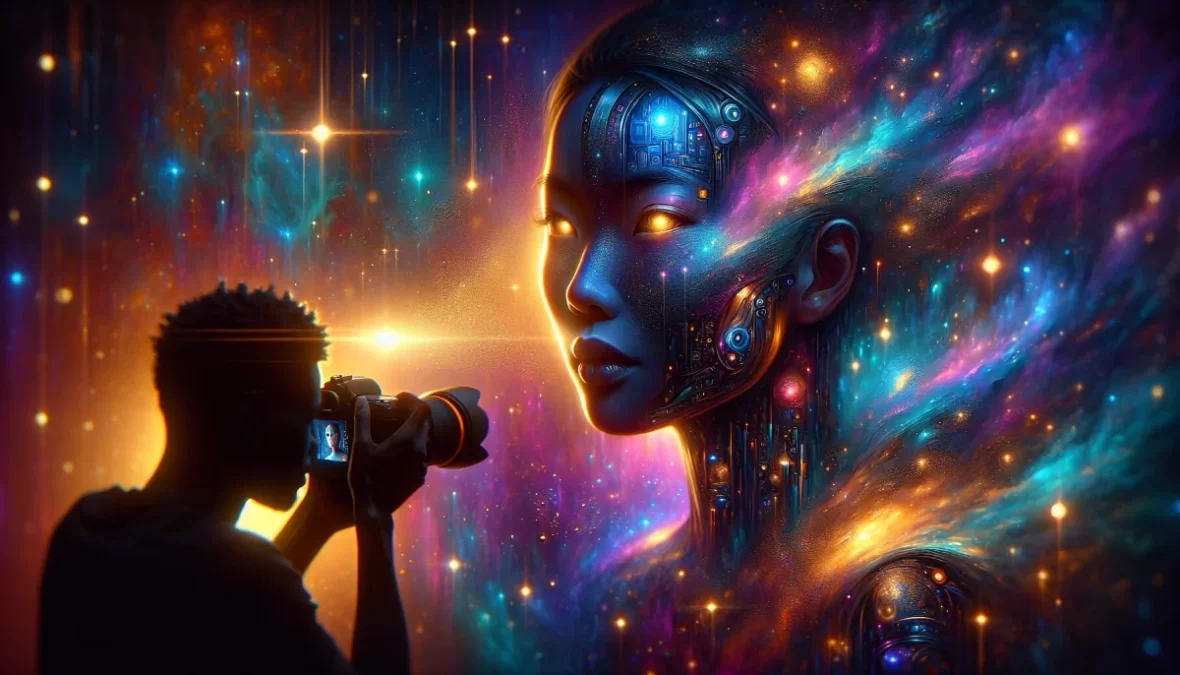The integration of artificial intelligence (AI) into the realm of portrait photography has opened a transformative chapter in visual media. With AI-generated images exhibiting increasingly realistic depictions of human faces and expressions, the boundary between authentic portraits and computer-created visuals is becoming increasingly blurred. This evolution prompts critical questions about the future trajectory of portrait photography and its impact on the modeling industry.
AI-Generated Images: Ushering in a New Era of Photography
Advancements in AI technology have enabled algorithms to generate portraits that are remarkably lifelike and artistically diverse. Unlike traditional photography, which captures existing subjects, AI-generated portraits can be tailored to feature an infinite range of appearances, expressions, and styles. For instance, a viral post by Moritz Stellmacher demonstrated how digital renderings can confuse viewers into questioning the reality of a human face, underscoring the sophistication of current AI tools (Stellmacher, 2024).
Key Characteristics of AI-Generated Portraits
- Unparalleled realism: Modern AI creates images nearly indistinguishable from real photos.
- Infinite variability: Customizable features allow for unlimited diversity in appearance.
- Rapid creation: High-quality images can be produced quickly and cost-effectively.
This emergence challenges conventional portraiture norms and invites a reevaluation of aesthetic values.
The Shift from Traditional Beauty Standards to Unique Aesthetics
Portrait photography and the modeling industry have long been governed by established beauty standards—symmetry, flawless skin, and universally appealing features. However, AI is disrupting these conventions by allowing the creation of strikingly unique and unconventional faces, which may redefine what is considered attractive. As audiences acclimate to these novel digital visages, there is growing potential for more inclusive and diverse representations in media.
According to a 2023 study by the Fashion Innovation Lab, >65% of consumers now prefer seeing more diverse and authentic representations in advertising, signaling a market demand that AI-generated images can easily fulfill.
How AI Influences Beauty Standards
- Promotes diversity: AI models can be programmed beyond cultural and physical stereotypes.
- Encourages individuality: Brands experiment with distinctive, eye-catching digital faces.
- Challenges norms: Unique AI creations can shift the paradigm of attractiveness.
Implications for the Modeling Industry
The rise of AI-generated portraits presents both opportunities and challenges for the modeling industry. Virtual models—entirely algorithm-generated personas—are gaining presence in digital advertising and social media campaigns. Notable examples include Lil Miquela and Shudu, who command millions of followers online and collaborate with major brands without ever setting foot on a physical runway.
Experts predict that while AI models will increasingly supplement marketing strategies, human models will remain essential for capturing genuine emotional depth, spontaneity, and authenticity that AI has yet to replicate fully. The tactile, human connection during photoshoots and live events is unlikely to be replaced in the near future.
Coexistence or Competition?
Current trends suggest a hybrid future where AI and human models complement each other, each serving distinct creative and commercial purposes. AI offers infinite scalability and customization, while human models provide authenticity and relatability.
The Competitive Advantage of AI: Mass Production and Data-Driven Optimization
One of AI’s most significant competitive edges is the ability to produce vast quantities of unique, high-quality images instantly and at minimal cost. Traditional photography involves considerable expenses and logistical complexities—such as booking talent, locations, and post-production edits—whereas AI eliminates many of these barriers.
This capability is especially transformative in sectors like e-commerce, where product photography plays a pivotal role in customer engagement and conversion rates. With AI, companies can generate tailored images targeting different demographics or styles and conduct large-scale A/B testing to identify versions that optimize sales performance—something infeasible with traditional photography scale and speed.
A 2024 report by Gartner highlights that businesses employing AI-driven visual marketing strategies experienced average conversion rate improvements of up to 30%, demonstrating the tangible marketing benefits of AI in photography.
Benefits of AI for Businesses
- Cost efficiency: Significant reduction in photography expenses.
- Rapid iteration: Quick generation and testing of multiple image variants.
- Scalable customization: Images can be personalized for numerous market segments.
Unbounded Artistic Freedom with AI-Generated Images
Beyond commercial utility, AI expands artistic horizons by transcending the physical constraints of the real world. AI-created visuals can exhibit gravity-defying poses, surreal environments, and imaginative styles that are impossible to capture with conventional cameras.
This artistic freedom enables photographers, designers, and brands to explore and innovate visual storytelling methods, combining realism with fantasy, and merging multiple artistic influences seamlessly.
Conclusion: Redefining Portrait Photography’s Future Landscape
The fusion of AI technology and portrait photography signals an exciting evolution marked by diversity, creativity, and efficiency. While AI-generated images challenge traditional notions of portraiture and beauty, they also complement human artistry and authenticity.
Ultimately, the future of portrait photography is not about choosing between real faces or AI creations but embracing a dynamic coexistence. This integrated approach fosters a richer, more inclusive representation of beauty and opens new frontiers in creative expression and commercial innovation.
As AI-generated portraits continue to improve and proliferate, their influence will shape not only visual culture but also societal perceptions of identity and aesthetics.
References:
- Stellmacher, M. (2024). Twitter post on AI-generated human portrait.
- Fashion Innovation Lab (2023). Diversity and Authenticity in Fashion Advertising. Fashion Industry Report.
- Gartner (2024). AI-Driven Visual Marketing and Its Impact on Conversion Rates. Marketing Technology Insights.
- McKinsey & Company (2023). The Future of AI in Creative Industries. mckinsey.com

